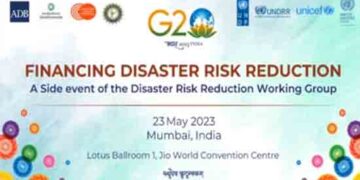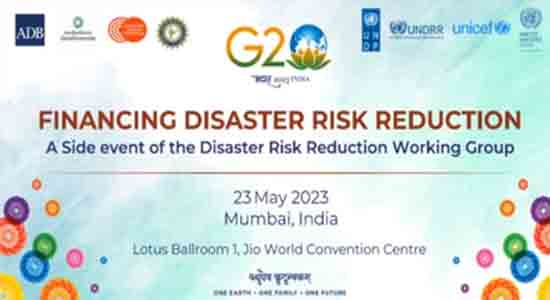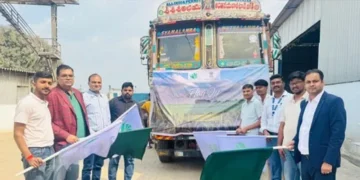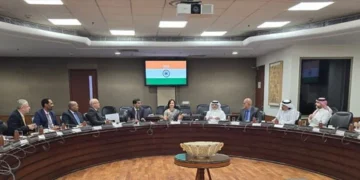 Participants at the debate on Financing Disaster Risk Reduction at the side event of the G20 Disaster Risk Reduction Working Group meeting here on Tuesday were unanimous in their submission that the countries need more money to cut disaster risk, its preparedness, management, resilience, recovery and reconstruction, its operationalisation is important. Although various countries have disaster mitigation or recovery funds, the key is its operationalisation and what kind of capacity are the major challenges. Further the development of the national system and risk pooling are the trends of the future.
Participants at the debate on Financing Disaster Risk Reduction at the side event of the G20 Disaster Risk Reduction Working Group meeting here on Tuesday were unanimous in their submission that the countries need more money to cut disaster risk, its preparedness, management, resilience, recovery and reconstruction, its operationalisation is important. Although various countries have disaster mitigation or recovery funds, the key is its operationalisation and what kind of capacity are the major challenges. Further the development of the national system and risk pooling are the trends of the future.
The National Disaster Management Authority (NDMA) Member Secretary Kamal Kishore said there are clear lessons of how public private partnership works especially in the US in this field and how it can be applied by others. This apart, another issue is the whole notion of risk communication and how communities know the risks. The challenge in federal structure like India is crucial.
Asian Development Bank in its presentation made a strong submission to establish a conducive disaster recovery management policy regime and institutional architecture, legislate and enforce risk sensitive building codes and land use zoning, enhance the availability and accessibility of disaster risk data and build capacity to use risk data. Further, ADB called for assessment of disaster risk at investment concept state, build economic evidence for and apply low discount rates to investments in resilience and enhancement of stakeholder coordination on the disaster risk recovery and preparedness.
The NDMA member Krishna Vatsa said that the National Disaster Response Fund (NDRF) and National Disaster Mitigation Fund (NDMF) have been formed in India adding that the Centre allocates the resources. The NDRF and State Disaster Response Fund (SDRF) get 80% allocation and the balance 20% to the NDMF. ‘’There are three windows in the allocation of these funds. They include response and relief (40%), recovery and reconstruction (30%) and preparedness and capacity building (30%). The has been balanced and deliberate allocation. However, the biggest challenge is how to utilise these funds,’’ he noted.
Japanese representative Omi Kenji said that the BCM (Business Continuity Management) Rated Loan Program is the world’s first loan menu to use BCM ratings to select outstanding companies on the basis of disaster prevention, business continuity and crisis management measures. The primary objective of BCM is to help mitigate business setbacks and protect employees’ lives in the face of a disruptive event. He informed that in the last 15 years about $4 billion have been disbursed under this programme.
The US Federal Emergency Management Agency (FEMA) advisor Lynsey Wallace extensively spoke about disaster relief funds and how it has been operationalised. She also explained the functioning of the Floodplain management programme which is a community-based effort to prevent or reduce the risk of flooding, resulting in a more resilient community. ‘’We have brought two legislative proposals including how to transform flood insurance programmes and how people should be included to transform risk communication,’’she noted.
Indonesian representative Dr IR Udrekh said that the Disaster Management Fund has been set up to strengthen the financial capacity as disaster risk reduction and related works cannot rely on a single resource mechanism. ‘’There is a need for better understanding of risk and impact. Recognising the role of effective governance, Indonesia has crafted a national policy for disaster risk recovery,’’he added.
Australian representative Alexandra Nichols said that a new disaster ready fund of $200 million was set up last year for mitigation and risk reduction. The government has launched a pilot with banks and insurance companies for making available affordable funds to communities.
































